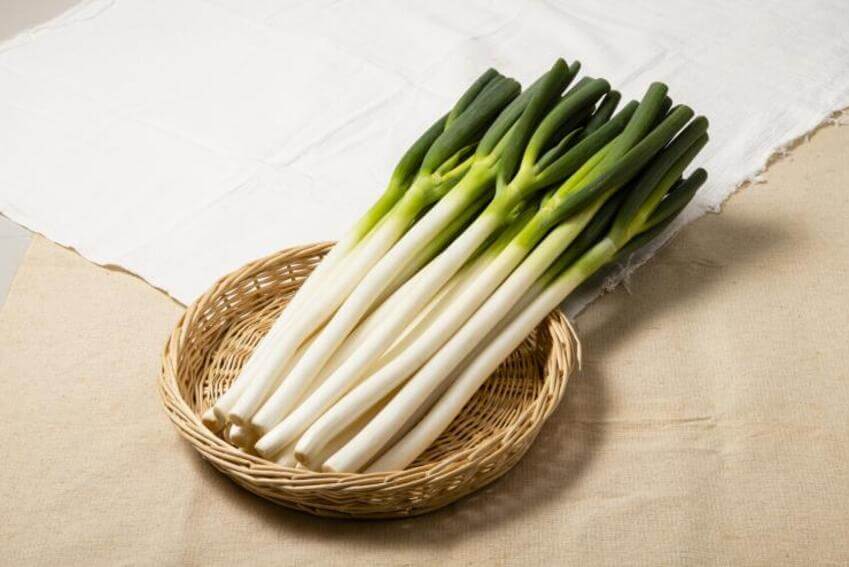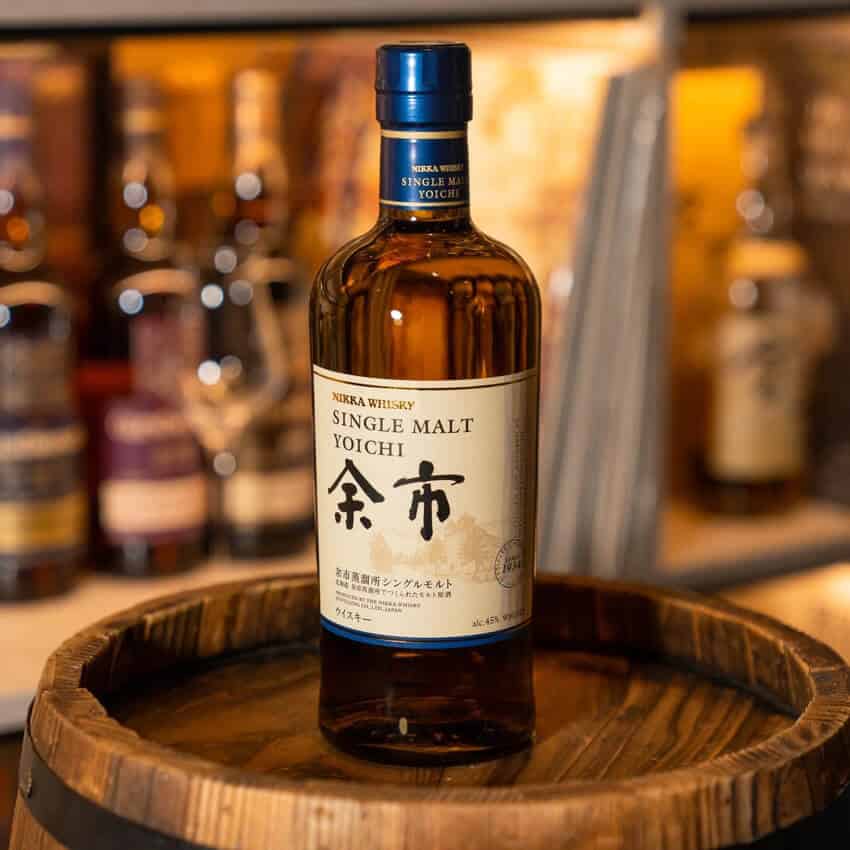Kashiwa Mochi is delicious sweet treat made from soft, chewy rice cake filled with sweet red bean paste but what makes it unique is its wrapping. The name “Kashiwa” comes from the oak leaf that’s wrapped around the mochi, which is not meant to be eaten but adds a subtle, earthy aroma. This mochi is usually enjoyed during the Children’s Day (kodomo no hi) festival in May with koinobori (carp-shaped streamers) and other desserts like chimaki. It symbolises prosperity and is a must-try for anyone who love wagashi (Japanese sweets)!

What is Kashiwa Mochi?
Kashiwa Mochi is a Japanese confection made of soft chewy mochi filled with sweet anko and wrapped in a fresh oak leaf. The oak leaf, known as kashiwa, isn’t edible but it adds a visual and aromatic touch and also has a meaning attached. For Japanese people, the oak tree is a symbol of the prosperity of family and descendants because the tree doesn’t shed old leaves until new ones grow. This symbolism has made kashiwa mochi a popular treat to celebrate Children’s Day (a national holiday on May 5th) to wish for health, growth, and happiness of children. This day is also originally Boy’s Day (‘Tango no Sekku’ 端午の節句) in Japan since the Edo period to celebrate the health and happiness of boys. There is also a Girl’s Day (aka ‘Hina Matsuri’ Doll Festival) in March.
Kashiwa mochi has the perfect balance of soft and chewy texture with a classic Japanese subtly sweet flavour. This traditional treat is best eaten fresh on the day you make it with some tea!

Here’s What you Need to Make Kashiwa Mochi
Here are the key ingredients to make authentic kashiwa mochi at home. Most of ingredients are available from Japanese grocery stores.

Joshinko
This is a fine rice flour made from short-grain Japanese rice. It’s the primary ingredient for the mochi to achieve its characteristic soft and chewy texture.
Shiratamako(glutinous rice flour)
Another type of rice flour, but made from glutinous rice. When combined with Joshinko, it helps create the perfect mochi consistency – soft yet slightly elastic.
Sugar
A small amount of sugar is added to the mochi dough to balance the flavors and add a hint of sweetness to complement the filling.
Anko paste
This sweet red bean paste serves as the filling for this chewy confection. It’s typically made from azuki beans and sugar, creating a smooth, sweet paste that is often used in Japanese desserts.
Kashiwa leaves (Oak Leaves)
While not edible, oak leaves are key to making Kashiwa Mochi. They serve as a natural wrapper and also add a subtle aroma and visual appeal. The leaves also have cultural significance, symbolising family growth and prosperity.
Ingredients Substitution
While traditional Kashiwa Mochi uses specific ingredients, you can make substitutions if needed.
- For the mochi, a mix of regular rice flour and sweet rice flour can replace Joshinko and Shiratamako.
- If anko (red bean paste) is unavailable, you can use other sweet fillings like mashed sweet potato or chestnut paste.
- In place of oak leaves, you can use Sarutoriibara (Chinaroot) or bamboo leaves instead.
Keep in mind that these substitutions may alter the authentic taste and texture, but they allow you to create a similar snack when traditional ingredients are hard to find.
How to Make Kashiwa Mochi Step-by-Step Instructions
Preparation
Divide the anko (sweet azuki bean paste) into equal pieces of four with plastic wrap and roll into small balls. If you are making anko sweet azuki bean paste from scratch, you need to make it the night before.

Making Kashiwa Mochi
- Place the dry ingredients (joshinko, shiratamako, and sugar) in a bowl and mix. Then add the hot water gradually checking the firmness of the dough. It’s hot, so use a spatula or chopsticks to mix first.

- Once it has come together, knead the mixture thoroughly with your hands.
- Tear the dough into pieces and place in a steamer basket mamking sure they do not overlap so that it steams evenly, then steam over medium heat for about 10 minutes.

- Once the steaming is done, transfer to a bowl and mix while crushing with a rolling pin while it is still hot.

- Once it has been crushed to a certain extent, knead it with your hands.
- If you quickly dip it in ice water halfway through to cool it down, it will become glossy.

- Remove from the iced water, knead again, roll out into a log and cut into 4 equal pieces.

- Roll into balls, lightly squish with your hands, then use a rolling pin to stretch out the dough up and down to an oval shape and match the size of the oak leaves.

- Place an anko (azuki bean) paste ball in the center and sandwich it with the dough. Place the smooth side of the oak leaves inwards to wrap the dough. Seal the center of the seam tightly.

- Then arrange them on a steamer basket and steam for about 5 minutes. This last step is an optional step, but it helps bring out the aroma of the oak leaves.
- When wrapping the oak leaves, let the dough cool before wrapping it so that it doesn’t stick to the leaves.
- Kashiwa mochi leaves have a front and back, when wrapping the mochi in an oak leaf, make sure the smooth side of the leaf is on the inside to help impart the flavor to the mochi.
Variations of Kashiwa Mochi
Mochi Variations
kashiwa mochi can be made with plain white mochi or with yomogi (mugwort) mochi. The yomogi adds a vibrant green hue and a classic earthy flavour which perfectly balances with the sweetness of the filling.
Filling Variations
You can use tsubuan (chunky azuki bean paste) instead of the smooth, refined taste of Koshian (smooth red bean paste).
Wrapping leaf variations
In the Kansai area, kashiwa mochi, is often wrapped with Sarutoriibara (Chinaroot), instead of the oak leaves. Sarutoriibara (Chinaroot) is also used for its symbolism as a token of good fortune and enduring lineage, because its leaves remain until new leaves emerges just the same as oak trees.
What to Serve with Kashiwa Mochi
- Hojicha : Hojicha is a unique Japanese green tea that’s roasted to create a rich, nutty flavor with lower caffeine content and no bitterness, making it perfect for lattes and culinary use.
- Hojicha Latte : Hojicha latte is a creamy, comforting beverage that combines roasted green tea powder with steamed milk. It has a smooth, nutty flavor and less caffeine than other lattes.
- Matcha Latte : Matcha latte is one of the most popular Japanese beverages. It’s a vibrant green and deliciously creamy drink that blends finely ground Japanese green tea powder with steamed milk.
- Mugicha : Mugicha is a caffeine-free Japanese tea made from roasted barley. It’s known for its nutty, slightly sweet flavor and enjoyed both hot and cold, especially as a refreshing summer beverage.
How to Store Kashiwa Mochi
Kashiwa mochi is best eaten fresh on the day it’s made. It can become hard and dry the next day unless stored very well.
Refrigerated Storage
Individually wrap each Kashiwa Mochi in plastic wrap, place them in a Ziploc or suitable airtight container, and store in the refrigerator.
Frozen Storage
To freeze, wrap each Kashiwa Mochi in plastic wrap, place them in a Ziploc or another freezer-safe bag, and store in the freezer for up to 2 weeks.
Thawing
To thaw frozen Kashiwa Mochi, leave them at room temperature for approximately 2 hours.
FAQ
Q : What is the difference between Kashiwa mochi and Sakura mochi?
A : Both types of mochi are a delicious and seasonal type of Japanese wagashi (confection). Kashiwa mochi is wrapped in an oak leaf (which is not edible) and is typically eaten on Children’s Day (May 5th). Sakura mochi is wrapped in a pickled cherry blossom (sakura) leaf, (which is edible) and is usually eaten during the spring season for hanami (cherry blossom viewing).
Q : Do you eat the leaf with mochi?
A : No, you don’t eat the leaf. The oak leaf (kashiwa leaf) used to wrap Kashiwa mochi is not edible. It’s primarily used for its symbolic meaning and to keep the mochi fresh and for aroma. You should remove the leaf before eating the mochi.
Kashiwa Mochi is a traditional Japanese sweet treat made with soft and chewy mochi filled with red bean paste and wrapped in an oak leaf.
Prep Time 10 minutes
Cook Time 20 minutes
Total Time 30 minutes
Servings: 4 mochi
- ▢ 80 g anko sweet bean paste *1
- ▢ 100 g Joshinko (fine rice flour) *2
- ▢ 20 g Shiratamako (glutinous rice flour) *3
- ▢ 2 tsp sugar
- ▢ 100 ml hot water
- ▢ 4 kashiwa oak leaves *4
Place the dry ingredients (joshinko, shiratamako, and sugar) in a bowl and mix together.
Add the hot water gradually while checking the firmness of the dough. It's hot, so use a spatula or chopsticks to mix first.
Once it has come together, knead it thoroughly with your hands.
Tear the dough into pieces and place in a steamer basket, making sure they do not overlap so that it steams evenly.
Steam over medium heat for about 10 minutes.
Once the steaming is done, transfer to a bowl, crushing with a rolling pin or pestle while it is still hot.
After it has been crushed to a certain extent, knead it with your hands.
If you quickly dip it in ice water halfway through to cool it down, it will become glossy.
Remove from the iced water, knead again, roll out into a log and cut into 6 equal pieces.
Roll into balls, lightly crush with your hands, then use a rolling pin to stretch out the dough up and down to an oval shape and match the size of the oak leaves.
Place an anko azuki bean paste ball in the center and sandwich it with the dough.
Place the smooth side of the oak leaves inwards to wrap the dough. Seal the center of the seam tightly.
Arrange them on a steamer basket and steam for about 5 minutes. This last step is an optional step, but it helps bring out the aroma of the oak leaves.
*1 If you are making anko sweet bean paste from scratch see this recipe here and you need to make it the night before.
*2 and *3 If you can’t access these specific flours, see the substitutes in the above post.
*4 If you can’t get oak leaves, see the substitutes in the above post. You can also have this mochi without the leaves since oak leaves are not edible and are just for aroma and appearance.
Calories: 172kcal · Carbohydrates: 38g · Protein: 3g · Fat: 0.4g · Saturated Fat: 0.1g · Polyunsaturated Fat: 0.1g · Monounsaturated Fat: 0.1g · Sodium: 0.02mg · Potassium: 23mg · Fiber: 1g · Sugar: 12g · Calcium: 7mg · Iron: 0.4mg
Course: Dessert, Snack
Cuisine: Japanese
I want to see it! Tag @chopstickchronicles on social media!
The site and our mobile application may contain links to affiliate websites. We receive a small affiliate commission for any purchase made by you on the affiliate website using such links. Read our disclosure policy.










 English (US) ·
English (US) ·